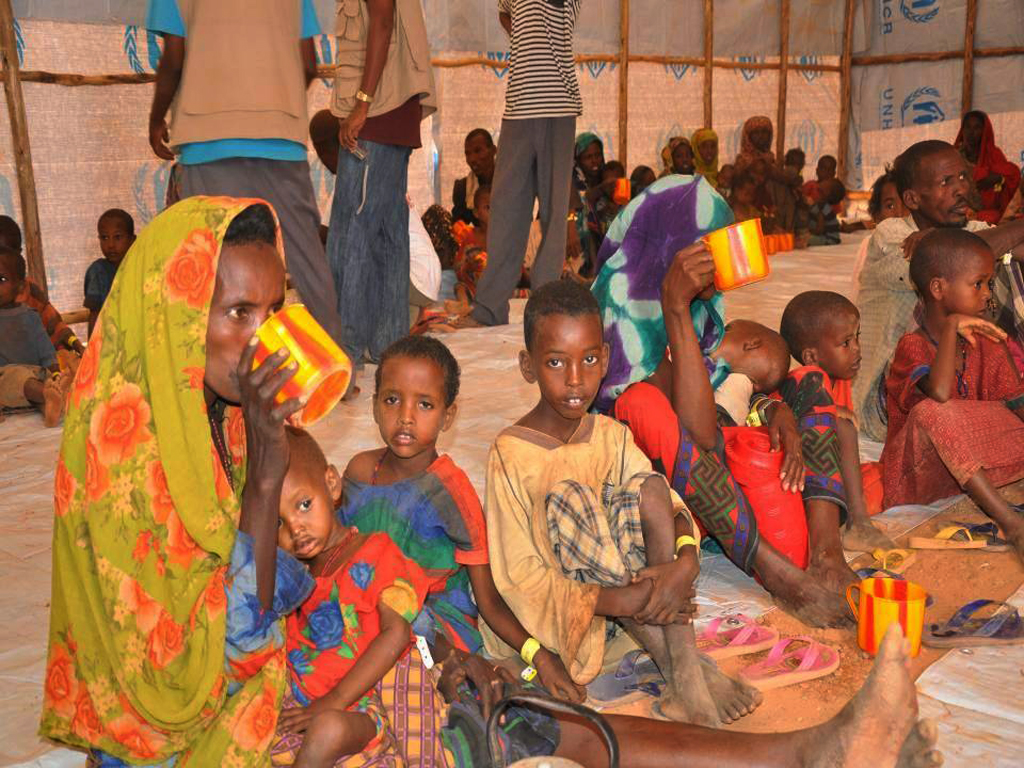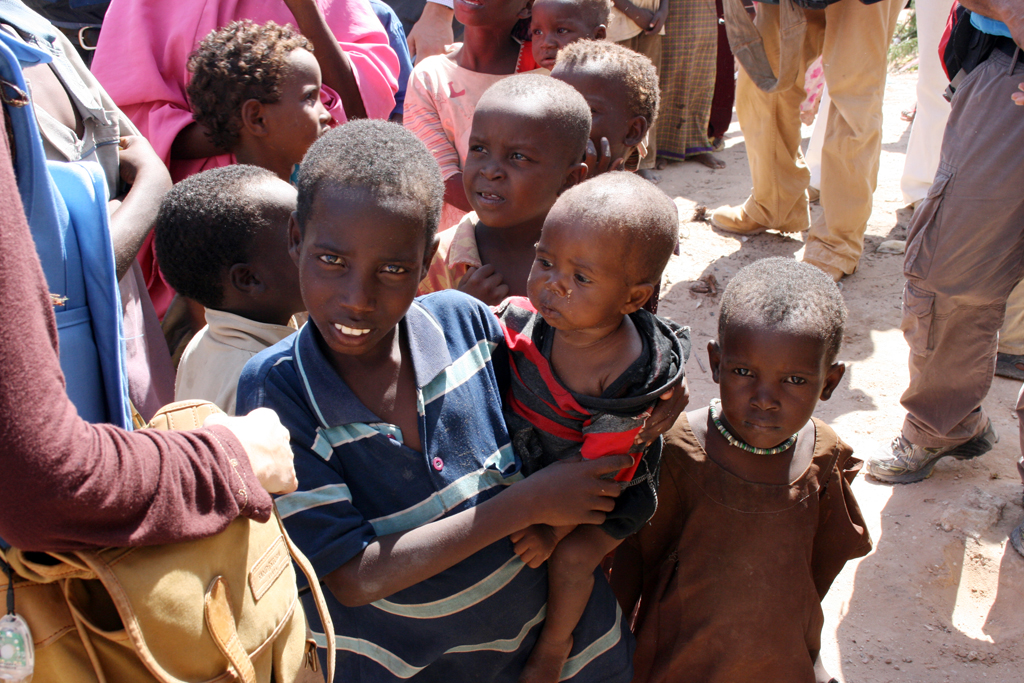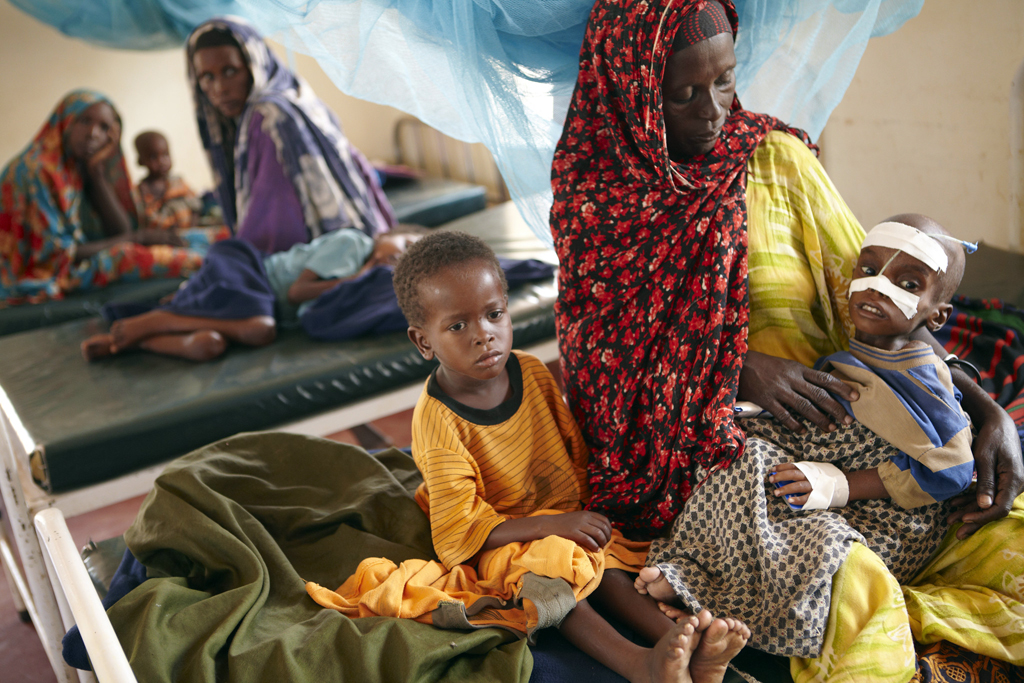A brief scroll down any notable news outlet’s web page will yield the latest from the turbulent political arena, which seems incomplete without an alleged sex scandal or controversial leaked footage; recaps of big-name universities’ athletic events, and the NCAA infractions thereof; multi-million dollar celebrity weddings (and subsequent divorces); not to mention the occasional, but always well-received, human interest piece that spotlights a local hero.
However, save for the now-quintessential photo of an enrobed East African woman delicately swaddling an emaciated, wide-eyed child gaping at the camera, one will be hard pressed to find detailed information regarding arguably the most severe human rights crises of the century. In the midst of volatile international relations and a domestic morale that has certainly seen better days, it would seem that humanitarianism and philanthropic efforts would become more crucial and prevalent than ever before, used at the very least as a means of boosting a sense of global optimism. And yet, as the famine in Somalia forges through the country and into neighboring nations in the Horn of Africa, it is ironically becoming the biggest deal that Americans aren’t talking about. The question is: Why?
The United Nations released its official declaration of the famine in two regions of Somalia, southern Bakool and Lower Shabelle, on July 20, 2011. Since then, however, the famine has spread to six different regions, forcing Somalis to seek refuge in neighboring Kenya and Ethiopia. Regardless of preexisting conditions in a country, a UN-certified famine must fulfill the following requirements: acute malnutrition rates among children exceeding 30 percent, more than two people per 10,000 dying each day, and each citizen’s average daily caloric intake falling below 2,100 (or just 40 calories more than an ultimate cheeseburger and 24 oz. vanilla ice cream shake from Jack in the Box). But while the July report ignited a global public outcry that made it seem as if the crisis had just occurred, Somalia and the greater region of the Horn of Africa has been suffering for some time.
A people’s history
The famine in Somalia did not occur in a vacuum. In fact, no food crisis does. In the case of Somalia, a number of factors contribute to the impending food shortage that has affected nearly half of Somalia’s population of just over 9.3 million.
Given its location on the equator, which slices through the southern tip of Somalia, the nation’s climate is mostly dry, arid, and hot, with average high and low temperatures ranging from 104 degrees to 59 degrees, respectively, each year. Furthermore, Somalia receives very little rainfall (a condition many environmentalists cite as yet another effect of global warming), which makes it susceptible to drought.
This is precisely what happened in the summer of 2011, and the inability to produce enough crops sent the prices of such essential foods as red sorghum (a grainy cereal that looks similar to couscous) skyrocketing. Following the United Nations announcement in July, the United States Agency for International Development (USAID) released a study illustrating the extent to which Somali farmers were forced to inflate the prices of their products. In Bakool, for example, the going rate of red sorghum increased 186 percent between June 2010 and June 2011 (to put it in context, this would be as if the price of a 14 oz. box of Cheerios went from $4.69 to $13.41 at Safeway). The drought also had a significant effect on the local livestock, of which ninety percent reportedly have died of starvation since the onset of the drought. With the decline in availability of these two crucial sources of food, Somalis could do little else than hope for rain to replenish their crops.

Developmental dilemmas, civil unrest
Additionally, Somalia’s low status on the global power pyramid means that it suffers greatly from the slightest shift in economics. Acknowledged by the United Nations Conference on Trade and Development as a least developed country–a title based on low income, weak human assets, and economic vulnerability–Somalia, according to SF State professor of Africana Studies Dr. Serie McDougal, is without the means to respond to such natural events as droughts, which is not the case in other areas.
“Somalia doesn’t have the infrastructure to deal with climate change, or even natural disasters,” he said.
McDougal exemplifies this developmental disparity in other regions as well.
“We all know about the earthquake in Haiti, but there was also one in Concepción, Chile [on February 27, 2010]. Even though the magnitude was larger, the latter dealt with it in a matter of months; with Haiti, it’s been years,” says McDougal, who has worked at SF State as a professor for four years and currently teaches several courses in Africana studies.
The irony is that even though Somalis suffer greatly from climate change conditions, they actually leave a pretty tiny carbon footprint compared to other countries.
“If there is a flood in San Francisco, we have the infrastructure to respond to it,” says McDougal. “We also have the irrigation capacity to use conserved water to bring it to places that have drought. But in San Francisco, with all of the industry and cars, we actually contribute more to the climate change than Somalia ever could.
“The people least responsibe for climate change are the ones most effected by it; Somalia is a perfect example of that,” he says.
The impact of these environmental factors notwithstanding, there is another element that plays into this multifaceted plight. The political field in Somalia is extremely vulnerable right now, which has paved the way for radical groups to emerge as national authorities. This group in question is known as Al-Shabaab, which means “the youth” in Arabic. Opposing the leadership of the Transitional Federal Government of Somalia–which is recognized by the United Nations, the African Union, and the United States–Al-Shabaab consists of the branch of the Somali Council of Islamic Courts that overtook the southern half of Somalia in the latter half of 2006, and has since performed a number of militant acts in the country, like the Mogadishu suicide car bombing on September 17, 2009, that killed 11 peacekeeping African Union soldiers and a number of citizens seeking care at a nearby hospital. Currently, Al-Shabaab controls southern Somalia, where the famine is most severe, and until very recently has denied the entrance of foreign aid organizations looking to provide Somalis with food and water.

Redefining humanitarianism?
Given all of these layers in the stratum that is the famine in Somalia, one might presume–hope even–that the case would be handled with immediacy and zeal. But alas, unlike the earthquake in Haiti and the tsunami in Japan, this particular human rights crisis is receiving little to no attention by the general American population. According to research done by CNN Money, Americans raised $275 million for Haiti and $87 million for Japan, both within the first week of the respective disasters. This money was generated through non-governmental organizations; the American Red Cross raised $2.8 million towards the Japan earthquake and Pacific tsunami response on text donations alone. Regarding Somalia, not only are statistics chronicling American donations elusive, but it was not until August 8, nearly three weeks after the UN’s declaration of famine, that President Obama permitted a donation of $105 million to be sent to the East African country. In overheard conversations regarding the topic, students still react in ways that indicate they were not even aware the famine existed. In Professor McDougal’s classes, he notices not necessarily a disinterest among students, but an overall lack of new information.
But who is at fault for that?
According to Kate Kilbourne, the web and social media manager for the Campaign for Female Education (Camfed), this responsibility lies squarely on the shoulders of the news.
“It has to do with media attention,” she says. “I fault mass media and its outlets. Famine is prevalent, but people don’t know about it.”
Professor McDougal takes a less critical perspective, instead looking more closely at the potential gains by developed countries in providing aid to Somalia.
“At any given time, there are a number of humanitarian crises in the world, and countries choose which ones to put at the top of their list [in terms of who to help] based on a strategic interest,” he says, citing as an example the United States’ decision to intervene in Libya, a country from which they could gain immensely, than that of the Democratic Republic of the Congo, which is currently undergoing a civil war that has claimed over three million lives in a five-year period.
But both Kilbourne and McDougal’s ideologies align when it comes to the importance of preventative, rather than reactionary, aid.

Reflecting her organization’s focus on female empowerment, Kilbourne suggests that “rather than giving money or food to countries suffering from drought or famine, we need to train mother support groups on how to grow their own food so that they are less reliant on external entities.”
McDougal concedes that while it is a good sign that Al-Shabaab has lifted its ban against foreign aid workers entering the country, he still believes that “when it comes to precautionary aspects, it is really a question of this: can we achieve a stable, representative government, and can we get international private companies to invest in water conservation and agricultural self sufficiency in Somalia?” Until this happens, he argues, “it’s going to be this same crisis response, where we bring wheat, rice, and other food in the wake of a disaster.”
In the case of environmental disasters like the one in Somalia, philanthropy seems to take on a different meaning.
“There is definitely a philosophy of what it means to help,” says McDougal. “What I’ve been taught is that it’s a selfless and spontaneous thing: somebody drops their bag, and you immediately help them by picking it up. But when it comes to international relations, help is far from selfless. It’s very quid pro quo, and it transforms help into a strategic means of exercising power.”
So until the media makes an effort to illuminate the food plight in Somalia, and until larger governmental organizations sincerely accept the concept of helping without seeking anything in return, the chances of seeing a significant improvement are disconcertingly slim. Somalia has dropped its bag, and the rest of the world, for the most part, is taking its time in picking it up off the ground.


whoolo • May 24, 2016 at 7:43 pm
Thank you for the sensible critique. Me & my neighbor were just preparing to do a little research about this. We got a grab a book from our area library but I think I learned more clear from this post. I’m very glad to see such fantastic information being shared freely out there.
ACT Foundation • May 1, 2016 at 9:54 pm
The humanitarian problem is awareness of every individual in all countries, to assist in lifting the welfare of their
Even in our country, his best has a program to provide assistance, including to Mogadishu Somalia, susch as meat “qurban” for their good food
gaps diet • Nov 30, 2013 at 4:06 pm
The deputy director of the FDA division that oveersees metabolic
drugs stated, “I was a little surprised the vote went as it did”, the deputy director ffelt that although many panelists weren’t strongly against Qnexa,
but possibly just had some lingering concerns that would make them
vote no. This may possibly lead to an addiction if the doses of Phentermine
are used in substantial quantities. It would come on
early afternoon and be gone by morning at first, but after a couple weeks,
I would wake up with a red nose.
Christina Lachance • Jul 2, 2013 at 8:54 pm
You could definitely see your expertise in the paintings you write. The sector hopes for more passionate writers like you who are not afraid to say how they believe. Always follow your heart. “A second wife is hateful to the children of the first a viper is not more hateful.” by Euripides.